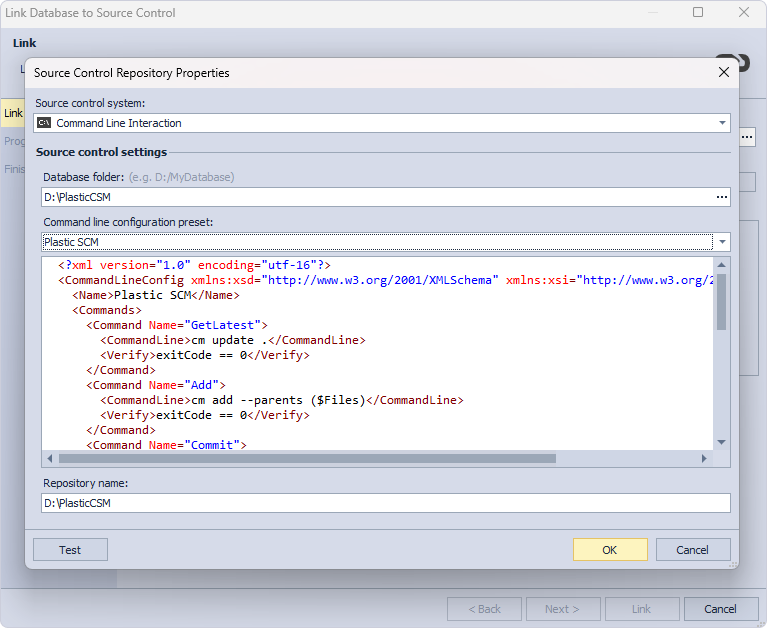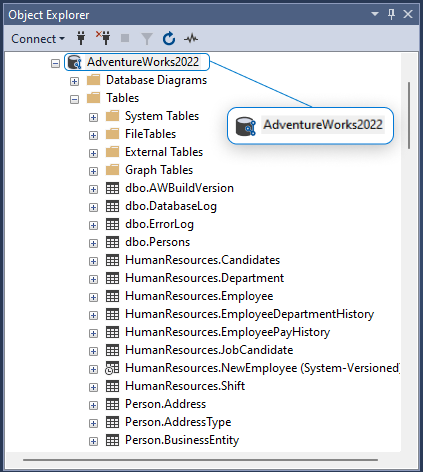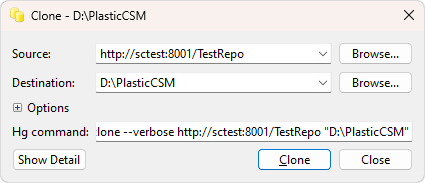Link a database to Plastic SCM and other systems
dbForge Source Control is a Microsoft SQL Server Management Studio (SSMS) add-in designed to manage database changes in the best-known version control systems.
With the help of the tool, you can version-control database schemas and data, roll back unwanted changes, handle static data conflicts, and maintain the integrity of the database. Source Control enables you to link your database to Plastic SCM, a cross-platform distributed version control tool. Plastic SCM can boast extensive functionality as it offers a command-line tool, native GUIs, diff and merge tool, and integration with several IDEs.
Note
Before linking a database to Plastic CSM, ensure you have Plastic SCM client installed.
1. In Object Explorer, right-click a database you want to link to source control and select Source Control > Link database to Source Control to open the Link Database to Source Control wizard.
2. On the Link page of the wizard, click + in the Source control repository field.
3. In the Source Control Repository Properties dialog, choose Command Line Interaction from the Source control system dropdown list and do the following:
- Specify a path to the Database folder that stores a cloned copy of the repository.
- Choose the required Command line configuration preset from the dropdown list:
- Template to link a database to another system and then modify it accordingly in the Command line configuration editor.
- Git (example) to link a database to Git.
- Plastic SCM to link a database to Plastic SCM.
- Mercurial to link a database to Mercurial.
- Surround SCM (example) to link a database to Surround SCM.
- Optional: The Repository name is automatically derived from the name of the database folder. However, you can specify a different name of the repository.

4. Optional: Click Test to verify that the database can be successfully connected to source control.
5. Click OK to apply the changes and close the Source Control Repository Properties dialog.
6. Select a database development model: dedicated or shared.
7. Click Link to establish the connection between the database and source control.

The Refresh progress window opens automatically, showing the stages of the refresh operation. The linked database gets the following icon in Object Explorer.

Create a database folder
1. Create an empty folder on the disk of your computer where the local repository will be stored.
2. Right-click the created folder and select TortoiseHg > Clone.
3. In the Clone dialog that opens, specify the source and click Clone.
